Road Safety News
Road Safety News concern a selection of the most recent developments on road safety in Greece, in Europe and worldwide.

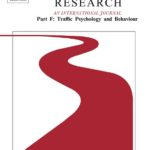
A paper titled Identifying driving profiles after take over request in automated vehicles at SAE levels 2 and 3 authored by Marios Sekadakis, Sandra Trösterer, Peter Moertl and George Yannis has been published in Transportation Research Part F: Traffic Psychology and Behaviour. The analysis included clustering to develop distinct driving profiles based on key measurements collected through a driving simulator experiment, such as acceleration, deceleration, and speed, offering a deep understanding of driver behavior in responses to take over requests. Findings suggest that the nervous driving profile, although less frequent, poses significant safety implications due to higher deceleration rates and variability in speed and deceleration. The study also highlights that non-driving related tasks increase the need for longer take over time with greater variability observed at higher automation levels. These insights can inform the design of more adaptive HMI systems, enhance real-time feedback mechanisms, and improve driver training programs to ensure safer transitions during take over requests. 

A paper titled Evaluating the Environmental and Safety Impacts of Eco-Driving in Urban and Highway Environments authored by Marios Sekadakis, Maria Ioanna Sousouni, Thodoris Garefalakis, Maria Oikonomou, Apostolos Ziakopoulos and George Yannis has been published in Sustainability. Within a group of 39 participants aged 18–30, multiple driving scenarios were conducted, both without and with eco-driving guides, to assess the impact of eco-driving behavior on environmental sustainability and safety outcomes. Data on pollutant emissions, as well as crash probability were utilized using linear regression models, while binary logistic regression models were employed to assess crash probability. The analysis revealed thateco-driving led to a significant reduction in pollutant emissions, with CO2 emissions decreasing by 1.42%, CO by 98.2%, and NOx by 20.7% across both urban and highway environments, with a more substantial impact in urban settings due to lower average speeds and smoother driving patterns. These findings support the integration of eco-driving techniques into transportation policies and driver education programs to foster sustainable and safer driving practices. 

A paper titled Examining the effects of texting, web surfing, and navigating apps on urban driving behavior and crash risk authored by Maria Oikonomou, Foteini Orfanou, Marios Sekadakis, Dimosthenis Pavlou and George Yannis has been published in Traffic Safety Research. This study collects driving data from 36 young adult drivers through a driving simulator experiment, supplemented by a survey to gather participant characteristics and driving profiles. Data analysis utilized linear and binary logistic mixed models to explore the effects of texting and web surfing on speed and its deviation, headway distance and its deviation, and crash risk. Results indicate that using texting, web surfing and navigating applications while driving elevate crash risk by 10% and decrease speed, speed deviation, headway, and headway deviation by 9%, 23%, 6%, and 18%, respectively. These findings underscore the crucial role of specific smartphone applications in shaping driving behavior and emphasize the need for targeted interventions to mitigate the associated risks in urban driving scenarios. 

The Horizon Europe research project IMPROVA has recently released its IMPROVA 2nd Newsletter, which provides information on the latest outcomes of the EU-funded IMPROVA project focusing on enhancing road safety by addressing the complexities of long-term consequences (LTC) caused by road traffic accidents. This newsletter announces the 2nd Knowledgebase Forum (KBF) which will focus on the advancements in the topic of Long-term consequences: Scales, Virtual Testing and Human Body Models, which will take place in Vilnius Lithuania, on September 8 2025, as well as its presence at the International Congress on Transportation Research, which will be held in Thessaloniki, Greece on 16-18 October 2025. The Project also announced the 3rd IMPROVA General Assembly which will take place on June 16-18 2025 in Warsaw, Poland. Special focus was given to the Data Protection Impact Assessment training carried out by NTUA, in which consortium members gained valuable insights. 

A paper titled Using computer vision and street-level videos for pedestrian-vehicle tracking and behaviour analysis, authored by Roberto Ventura, Stella Roussou, Apostolos Ziakopoulos, Benedetto Barabino and George Yannis has been published in Transportation Research Interdisciplinary Perspectives. Using advanced computer vision object detection and feature extraction models, this framework integrates Kalman filtering, homography transformations, and object re-identification to achieve high accuracy. This study utilizes data from roadside video recordings from Athens, Greece. The findings show accuracy rates of 50%-70% in detecting traffic light statuses and identified a 23% discrepancy on average between manual and automated counts of illegal crossings. This paper underscores the potential of computer vision detection systems to provide reliable, real-time data that takes the road network conditions into account, ultimately contributing to safer urban traffic management and informed policy decisions. 

The Directorate General for Mobility and Transport (DG Move) of the European Commission announced a reinforced platform for dialogue and co-creation of actions to implement the 2021 EU Urban Mobility Framework. The Expert Group for Urban Mobility, released 17 new Reports on mobility and road safety, reaffirming the EU’s long-term strategic goal to achieve as close to zero deaths and zero serious injuries on the EU’s roads by 2050. The goal is stronger engagement by Member States and improved dialogue with cities, regions and stakeholders on all urban mobility issues. 
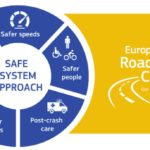
The European Road Safety Charter of the European Commission, has recently published a new Article, exploiting the latest statistics from across Europe for helmet use and seatbelt/child restraint systems, two of the most widespread safety equipment. Through this article, the Chapter increases the attention over the coming months to the use of safety equipment, hoping to achieve the EU’s objective of halving the number of road deaths by 2030. The data suggests that when cycling, helmet use reduces the risk of serious head injury by 60% and fatal head injury by 71%, also according to the WHO, wearing a quality motorbike helmet reduces the risk of death by over six times and the risk of brain injury by up to 74%. Wearing a seatbelt reduces the risk of death and injury by around 60% for drivers and 44% for rear-seat passengers. Correct use of a child restraint system reduces the risk of being killed or injured by around 55% to 60% compared with children who are not buckled up. 

The European Road Safety Charter of the European Commission, has recently published a Guide on how to run effective road safety awareness campaigns, highlighting their role in improving road safety, including in urban areas. The Guide provides practical advice on how to design, implement, and evaluate such campaigns to enhance road safety efforts, including examples of campaigns from cities across Europe. These initiatives aim to inform, persuade, and encourage individuals to adopt safer behaviours on the road, thus leading to a 5-10 % reduction in road crashes, reinforcing their importance in broader road safety strategies. 

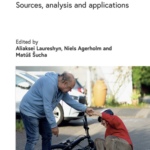
The Institution of Engineering and Technology (IET) has recently published a book edited by Aliaksei Laureshyn, Niels Agerholm and Matúš Šucha, titled “Traffic Safety Data: Sources, analysis and applications”. It examines the different data types that can be collected and used for monitoring, analysing, and improving road safety, including chapters on police records and accident modelling, healthcare system records, self-reporting of accidents, data from insurance companies, and more. This book provides a wide and up-to-date perspective on relevant traffic safety data, helping to broaden the horizons for safety experts and also to promote a more knowledge and data based approach to traffic safety management. 

The International Transport Forum (ITF) together with the World Health Organization (WHO), recently launched “The Global Road Safety Assessment Framework for Corporate Action and Reporting” to support businesses in integrating robust road safety practices into their operations and value chains and thereby contribute to the global effort to reduce road traffic fatalities and injuries. The development of this Framework was initiated in response to a call from Transport Ministers representing over 60 countries to enhance road safety practices across corporate value chains and align them with the Global Plan for the United Nations Decade of Action for Road Safety 2021-2030, by incorporating key standards and guidelines. 

UNRSF at the 4th Global Ministerial Conference on Road Safety, which was held at Morocco, Marrakesh on 18-20 February, reaffirmed their commitment to making roads safer. This event mobilised critical funding to support life-saving road safety initiatives in over 125 low and middle income countries facing the highest road crash fatalities. In line with its mission to drive systemic changes in road safety, the UNRSF announced eight new projects, tackling key road safety challenges, from strengthening motorcycle safety laws and sustainable financing to improving enforcement and protecting vulnerable road users. 

The International Transport Forum (ITF) has recently published its new Safe System Tool, with the active contribution of NTUA, which offers a user-friendly interface to navigate through the International Transport Forum’s framework for implementing a Safe System. The Tool helps road safety stakeholders to evaluate how their strategies, projects or plans contribute to a Safe System, since it visualises opportunities for improvement and helps to identify effective interventions to save lives. 

Armira Kontaxi has successfully defended her PhD dissertation titled: The Driver Behavior Telematics Feedback Mechanism, under the supervision of NTUA Prof. George Yannis. Data from a 21-month naturalistic driving experiment involving 230 drivers across six feedback phases generated a robust dataset of 106,776 trips, covering 1.3 million kilometers. Advanced statistical and machine learning models, including Generalized Linear Mixed-Effects Models (GLMMs), Structural Equation Models (SEMs), and Survival Analysis methods (e.g., Weibull AFT, Cox-PH with frailty, and Random Survival Forests), were utilized to analyze behavioral metrics such as speeding, mobile phone use, harsh braking, and accelerations which demonstrated substantial impacts on reducing risky behaviors. Key findings suggest that the overall impact of feedback significantly improved driving behavior and safety, with notable variations across user groups and driving contexts. Urban environments demonstrated the most substantial reductions in mobile phone use and harsh events, likely driven by the heightened complexity and demands of navigating urban settings. These findings highlight the need for continuous and adaptive engagement strategies, incorporating diverse features tailored to the specific needs of different user groups and driving contexts, to ensure long-term effectiveness and sustained safety improvements. 


The Global Alliance of NGOs for Road Safety recently published a White Paper based on global best practices, in consultation with Alliance member NGOs, ensuring safe motorcycle helmets through appropriate laws, enforcement, and promotion. Through this White Paper, the Global Alliance of NGOs for Road Safety and its over 395 member NGOs from more than 100 countries, will assist Governments achieve the reduction of road fatalities and injuries needed to accomplish the vision of having zero road deaths and injuries by 2030. 


The Horizon Europe research project metaCCAZE has recently released a new Blog Post authored by Evi Koliou on AI and Smart Cities. As stated, AI-driven solutions can transform urban environments, since smart traffic control systems are no longer a futuristic concept but a present reality. These AI-driven systems optimise traffic flow, reduce congestion, and cut down emissions. By leveraging connected vehicle data and digital twins—technology that simulates real-world scenarios—we can develop road safety strategies that save lives. A crucial aspect of urban mobility transformation is the widespread adoption of 30 km/h speed limits in cities in Europe and worldwide. Research has shown that reducing speed limits in urban areas can save lives as no other road safety measure before (an average of 37% less fatalities on cities adopted the 30km/h), and creates a more pedestrian and cyclist-friendly environment. By making AI-driven mobility solutions inclusive, particularly for vulnerable road users such as pedestrians, cyclists, and people with disabilities. Also, implementing lower speed limits in urban areas plays a key role in this, fostering a safer, more welcoming environment for all. 

The Y-Mobility latest Conversations in the Park podcast episode “Speed Kills: Is Our ‘Freedom to Drive’ a Danger to Others?” explores the contentious relationship between personal driving freedom and public safety with three global experts in transportation safety and technology willing to say what others won’t: George Yannis, Nick Reed and David Fidalgo, hosted by Timothy Papandreou. Quick reality check:




- More road deaths than all wars combined
- Your SUV? It’s part of the problem
- That 30 km/h limit you hate? It’s saving lives
- Your “excellent driving skills”? That’s part of the problem too
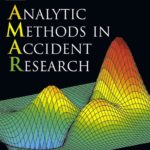
A paper titled Understanding the effects of underreporting on injury severity estimation of single-vehicle motorcycle crashes: A hybrid approach incorporating majority class oversampling and random parameters with heterogeneity-in-means authored by Nawaf Alnawmasi, Apostolos Ziakopoulos, Athanasios Theofilatos and Yasir Ali has been published in Analytic Methods in Accident Research. This study aims to provide an empirical assessment of the impact of underreporting issue using a hybrid approach in estimating injury severity for single-vehicle motorcycle crashes. Key results suggest that crashes occurring during slowing down or stopping are associated with lower injury severity, whereas negotiating a right turn increases the probability of severe injuries. Interestingly, crashes that occur on dry pavements are associated with higher injury severity when compared to wet pavements, likely due to rider behavior adjustments in adverse weather conditions to compensate for the risk. 

The European Union has recently adopted the new Directive to strengthen cross-border enforcement of road traffic rules. The newly adopted rules tackle several road safety issues by enhancing collaboration among Member States, streamlining offender identification and facilitating fine enforcement. Cooperation between national Authorities will not only focus on the most common and serious offenses like speeding, drunk and drugged driving, but also on several other hazardous behaviours. 
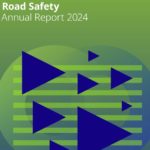
The International Road Traffic and Accident Database (IRTAD) of the International Transport Forum (ITF/OECD) published the Road Safety Annual Report 2024, on the development of road safety in 2023. It is based on data from 40 IRTAD member countries, with some preliminary data also for the year 2024. The main findings revealed that in 2023, there were 2.338 less fatalities than in 2022, also road deaths decreased by 2% in the first half of 2024 compared to 2023. However, the considerable journey ahead should be acknowledged, in order to achieve the global target of halving road deaths and serious injuries by 2030. 


The New Year Event of the Department of Transportation Planning and Engineering took place with great success on Tuesday, January 28th, 2025, with the participation of more than 80 members of the Department and the School of Civil Engineering. During the Event, the Director of the DTPE, George Yannis presented the 2024 Annual Report of the educational, research and scientific work of the Department. The Vice Rector of Finance, Infrastructure and Development, Nikolaos Lagaros and the Dean of the School of Civil Engineering, Eleni Vlachogianni addressed the Event. 

This year we followed our dreams, promoting intensively road safety scientific excellence and safer mobility everywhere and for all, including also our major campaign for city-wide 30km/h speed limits; the new catalyzer for saving so many lives with so little change in our habits.
At mid-way to the decade -50% target, we need to further strengthen our individual and collective efforts to sincerely include traffic safety into the mobility agenda and persist in implementing the vision zero traffic fatalities.
We thank you all for the excellent cooperation and we are sending you our very best wishes for Merry Christmas and a Very Lucky New Year, full of personal and professional achievements. ![]()

At a recent “Travelling Differently Podcast“, NTUA Professor George Yannis emphasized the necessity of city-wide 30km/h speed limits, highlighting significant safety benefits. He referred to several analyses data demonstrating that European cities implementing this measure have achieved an average 37% reduction in road fatalities. The importance of protecting vulnerable road users was highlighted, noting that the 30km/h speeds limits not only enhance road safety but also promotes walking, cycling and public transport. The need for a shift from policy intentions to concrete actions was emphasized, with focus on the role of Authorities in driving societal change. Professor George Yannis also pointed to the over-dependence on private cars in Greece, describing urban roads as “passenger car warehouses”. Particular emphasis should be given on the need to reimagine urban mobility, with the city-wide 30km/h speed limit identified as a unique pivotal measure for fostering safer and more sustainable cities. The full article and the related audio-podcast are now available. 


A paper titled Driving Automation Systems Penetration and Traffic Safety: Implications for Infrastructure Design and Policy authored by Antonia Antonakaki, Maria Oikonomou, Thodoris Garefalakis and George Yannis has been published in Infrastructures. The study aims to evaluate the impact of Autonomous Vehicle (AV) penetration rates on traffic safety, through the use of microscopic simulation scenarios, utilizing multiple linear and multinomial logistic regression models. The findings highlight that higher AV penetration rates generally improve traffic safety, although the coexistence of conventional vehicles and vehicles equipped with driving automation systems introduces traffic heterogeneity, potentially influencing safety outcomes. These results suggest that while AVs have a positive effect on road safety, further analysis is needed to address the complexities introduced by mixed-traffic conditions. 

CRC Press has recently published a book written by Peter Sweatman titled “Approaches to Road Safety: Evolution, Challenges, and Emerging Technologies”. It examines the evolution of safety practices, explores the role of emerging technologies such as connected and automated vehicles in achieving safer roads and highlights ongoing challenges in reducing traffic injuries and fatalities, including the strategies of Vision Zero and the safe system. Offering valuable insights, this book will appeal to professionals in the fields of safety, human factors, the automotive industry, traffic control, vehicle standards and regulations, transportation systems and road safety policy. 

A new book titled Using Artificial Intelligence to Solve Transportation Problems edited by Aleksander Sładkowski has been recently published. This book offers a comprehensive exploration of AI and digitalization solutions for diverse transportation challenges. The monograph examines various problems in the transport industry that find their solutions using AI, from fully autonomous vehicles to the use of AI as an assistant in solving logistics problems, using different approaches that exist in different countries, with different levels of economic development or well-being of the population. NTUA actively contributed with the following chapter, co-authored by Apostolos Ziakopoulos and George Yannis:

The Horizon Europe research project metaCCAZE has recently released the metaCCAZE 2nd Newsletter, which provides information on the latest outcomes of the EU-funded metaCCAZE project aiming to accelerate the deployment of smart systems that combine electric, automated and connected technologies and infrastructure, enabling zero-emission shared mobility services for both passengers and goods in European cities. Key innovative mobility solutions and the MetaInnovations toolkit implemented in the four Trailblazer Cities: Amsterdam, Munich, Limassol, and Tampere followed by the Trailblazer Cities: Athens, Krakow, Gonzo, Milan, Miskolc, and Paris region preparing to implement and demonstrate more successful innovative use cases. An Open Call for metaCCAZE Observer Citiesis released, inviting additional municipalities to join the initiative. 
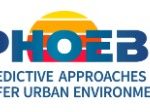
The Horizon 2020 research project PHOEBE has recently released the PHOEBE 4th Newsletter, which provides information on the latest outcomes of the EU-funded ‘Predictive Approaches for Safer Urban Environment’ (PHOEBE) project aiming to increase the road safety of vulnerable road users, especially those who use active mobility and e-scooters. Particular attention was given to the exploration of the pilot corridors by bike. 

The Male and Female Road Users Thematic Report of the E-Survey of Road Users’ Safety Attitudes (ESRA) has been published, as prepared by the Université Gustave Eiffel, with the support of of NTUA. This report explores gender-based differences in self-declared risky behaviors, risk perception, and support for road safety policies across 39 countries. Results indicate that men engage more frequently in risky behaviors compared to women, while women exhibit higher support for road safety policies and greater risk perception. Notably, gender differences are less pronounced among cyclists and motorcyclists compared to car drivers. 

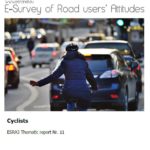
The Cyclists Thematic Report of the E-Survey of Road Users’ Safety Attitudes (ESRA) has been published, as prepared by DTU, with the support of NTUA. The Report provides comprehensive insights into the frequency of cycling, infrastructure usage, and self-declared safety behaviors among cyclists in 39 countries. Key findings indicate that the Netherlands and Denmark lead in frequent bicycle use, while cycling without a helmet and listening to music are the most common risky behaviors. Recommendations include improving cycling infrastructure, particularly in rural areas, and encouraging helmet use among male cyclists. 


The Support for policy measures and enforcement Thematic Report of the E-Survey of Road Users’ Safety Attitudes (ESRA) has been published, as prepared by SWOV, with the support of NTUA. This Report analyzes public support for key road safety measures (e.g., drink-driving policies, speed limits, helmet mandates) and the perceived and actual enforcement of road safety laws. Results revealed strong regional variations, with higher support for helmet use and alcohol interlocks in America, Asia and Oceania. It was indicated that gender and age disparities influence attitudes towards these policies significantly. 















































































































































































